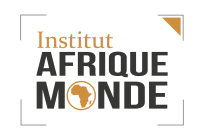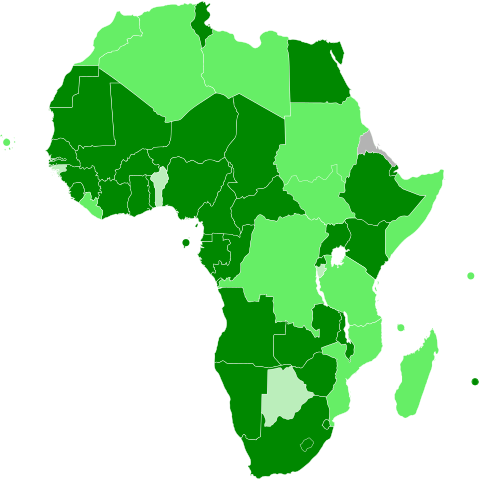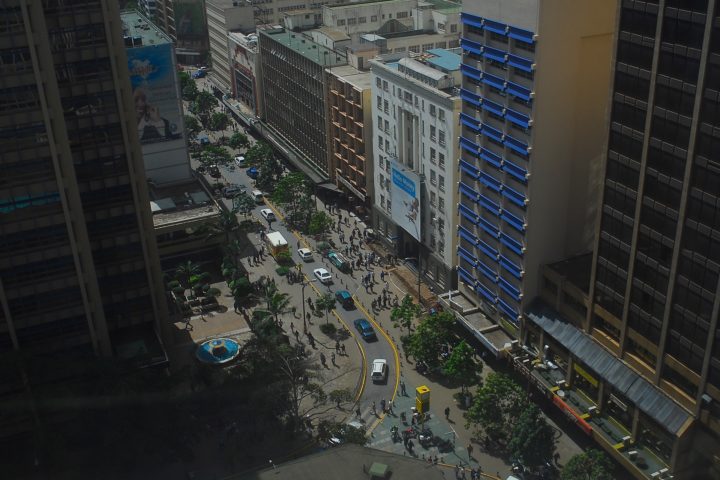This note was published in the Multi-Year Observatory of Sociopolitical and Security Issues in Equatorial Africa and the Gulf Islands of Guinea, Groupe de Recherche et d’Information sur la Paix et la Sécurité (GRIP), January 22, 2015.
Analysis note
By Germain-Herve MBIA, Governance, Peace and Security Programme Officer at the Institut Afrique Monde (IAM)
Introduction
Over the past decade, terrorism has emerged as a security concern in Central Africa. However, this threat is not yet defined by consensus and operation. Its apprehension remains subject to various interpretations, as demonstrated in particular by the heated quarrel between supporters and opponents of a law on the suppression of terrorism, passed by the National Assembly on December 4 and promulgated by the Cameroonian Head of State on December 23, 2014.
For the purpose of this note, we will rely mainly on the elements of definition suggested by the United Nations Security Council. Thus, “any act… committed with the intent to cause death or serious injury to civilians or non-combatants, the purpose of which is, by its nature or context, to intimidate a population or to compel a government or international organization to do or refrain from doing an act” can be characterized as terrorist.
The factors contributing to the emergence of terrorist movements will be discussed throughout this paper, as they are the keys to understanding acts of terrorist violence, and can also inspire possible responses to the problems posed by terrorism.
The recurrence and escalation of terrorist acts in the subregion have motivated many meetings of heads of State, including the “Paris Summit on Security in Nigeria”, held on 17 May 2014. The meeting focused on the existence and actions of the Nigerian terrorist group Boko Haram. It also addressed the subregional dimension of this phenomenon, with the group distinguishing itself by moving its actions towards the borders of Cameroon and Niger, and threatening the territorial integrity of Chad. The Cameroonian Head of State will also announce the entry of his country into the war against Boko Haram during the meeting.
Boko Haram appeared in 2002 in Nigeria, in some northeastern states (Yobe, Adamawa and Borno), bordering Cameroon, Chad and Niger. While it is based on Nigerian socio-political dynamics, the group is gradually extending its presence and influence in some localities in neighbouring countries, exploiting the socio-cultural continuity of neighbouring regions (languages, customs and religious practices are similar).
Nor does it ignore the porosity of borders, which gives rise to incessant cross-border movements that are difficult for state administrations to control. Since 2009, through the violence of its actions in Nigeria, the Boko Haram group has emerged as one of the main factors of social and political instability. This will lead Nigerian President Goodluck Jonathan to declare a state of emergency in the three states of Adamawa, Borno and Yobe on 14 May 2013. The group acquired international visibility through the kidnapping of 276 high school girls in Chibok in southern Borno State on April 14, 2014, and proclaimed on August 24, 2014, the establishment of a caliphate in Gwoza, militarily occupied a few days earlier. As a result, Boko Haram occupies a large number of villages and towns in northeastern Nigeria.
Chad and Cameroon suffer in a quite different way from Boko Haram’s activism. The first significant actions taken by the terrorist group in Cameroon are a series of kidnappings of people of foreign origin, starting in February 2013. This series will culminate in the kidnapping of about ten Chinese employees of a public works company on 16 May 2014 in Waza, followed by the kidnapping of close relatives and the wife of a member of the government, as well as other residents of the town of Kolofata on July 27, 2014. The group also regularly carries out massacres in villages and towns bordering Nigeria in the far north of Cameroon. Although attacks on Chadian territory have not yet been proven, the group’s violent actions in the regions near Nigeria and Cameroon are nevertheless disrupting the entire social, economic and agricultural organization of the conflict areas around Lake Chad.
In Cameroon in particular, one of the effects is the slowdown in economic activities in the northern regions, whose development is linked in particular to the development of tourism. The increase in the number of refugees from Nigeria is also adversely affecting the already precarious (societal) balances in this part of the country. The threat of Boko Haram thus questions the capacity of States in the subregion to apprehend the threat and to react to the challenge of terrorism. It particularly tests the security arrangements of these States in their dual function of preserving internal stability and protecting against external threats.
The final conclusions of the Paris Summit on Security in Nigeria highlighted the need for cooperation at three levels: bilateral, multilateral and international, while the concerted responses of countries in the subregion are slow to materialize.
Cameroon’s “declaration of war” against Boko Haram can easily be linked to the worsening threat to its territorial integrity, as well as to all the consequences (particularly political and economic) caused by the attacks of this terrorist group. Until January 2015, Chad seemed to have a different perception of the danger posed by Boko Haram, probably because of the near inviolability of its borders with Nigeria. However, the country is not immune to other threats from its borders with CAR, Libya, Sudan and Niger.
The design and implementation of a security doctrine adapted to the various threats – including the terrorist threat – thus remains dependent on the historical trajectory of each country, as well as its structural characteristics. In this note, we will discuss some elements of internal dynamics, as well as the influence of subregional and international dynamics, on the security doctrines of each country and the prospects for an anti-terrorist security doctrine.
Read more about it.
To go further.



